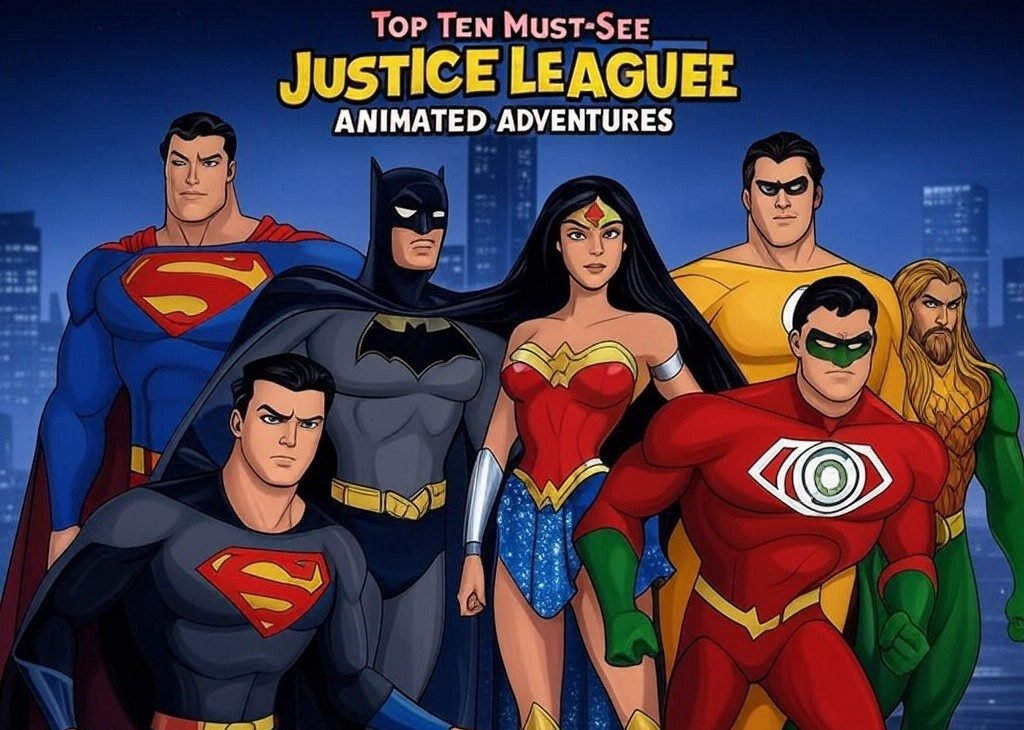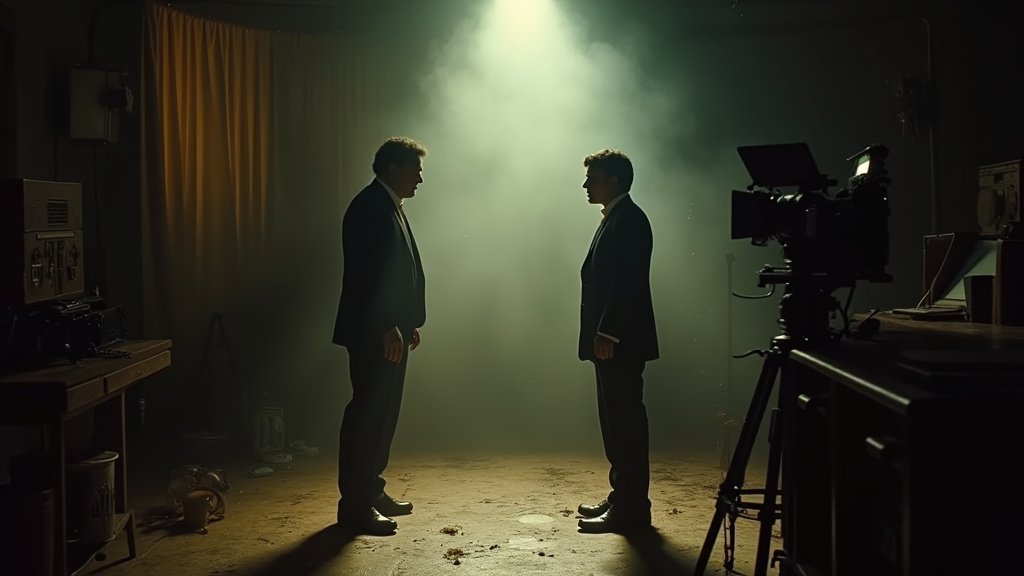Introduction to Justice League and Its Place in the DC Animated Universe
The DC Animated Universe (DCAU) is a treasure trove of compelling storytelling, rich character development, and vibrant animation. Among its crown jewels lies “Justice League,” a series that has captivated audiences since its debut. Following the success of shows like “Batman: The Animated Series,” “Static Shock,” and “Superman: The Animated Series,” Justice League brought together a diverse cast of iconic superheroes, creating a narrative tapestry that has stood the test of time.
Throughout its 52-episode run, Justice League has delivered numerous memorable moments and episodes that transcend the traditional villain-of-the-week format. The show artfully expands on the characters’ dynamics, explores alternate universes, and delves into intricate world-building. In this article, we will explore some of the standout episodes that highlight the show’s brilliance and its profound impact on the superhero genre.
10. The Savage Time (Season 1, Episodes 24 to 26)
Justice League is often lauded for its multi-part sagas, and “The Savage Time” is a prime example. This climactic finale of the first season sees the League returning to Earth only to discover that they have entered an alternate timeline where Vandal Savage has led the Nazis to victory in World War II. The episode is not merely an alternate history but a compelling exploration of how the League must navigate this new world while teaming up with their 1940s counterparts, including Steve Trevor and the Blackhawks.
The episode’s blend of historical context and superhero action makes it a unique entry in the series. While the League’s time in this alternate reality might feel inconsequential in the grand scheme of things, it opens doors to further exploration of time travel within the DCAU.
9. Legends (Season 1, Episodes 16 and 17)
Following the theme of time travel, “Legends” transports the Justice League to an idyllic 1950s where they encounter the Justice Guild of America, heroes inspired by the Golden Age of comics. While the episode has a campy, lighthearted tone, it also offers a deeper commentary on nostalgia and the darker realities that often accompany it.
The juxtaposition of the League’s modern sensibilities with the Guild’s old-fashioned ideals creates a fascinating dynamic, prompting viewers to reflect on the evolution of heroes and the shadows that can loom over seemingly perfect eras.
8. Comfort and Joy (Season 2, Episode 23)
Not every great episode of Justice League involves high-stakes battles or existential threats. “Comfort and Joy” is a holiday-themed episode that showcases the heroes’ more personal sides, revealing their individual holiday traditions. From Hawkgirl and Green Lantern engaging in festive roughhousing to Flash racing against time to secure a beloved toy for an orphanage, the episode encapsulates the joy and warmth of the season.
Superman’s admission of still believing in Santa Claus adds a whimsical touch, while Martian Manhunter’s exploration of Earth culture provides heartfelt moments. The episode stands out as a comforting reminder that even the world’s greatest heroes need time to unwind and celebrate the simple joys of life.
7. A Better World (Season 2, Episodes 11 and 12)
“A Better World” introduces a darker alternate universe where the Justice Lords, a tyrannical version of the Justice League, emerge following the death of The Flash at Lex Luthor’s hands. This episode poses moral dilemmas and explores the ramifications of power and justice. The Justice Lords’ invasion of the League’s home universe offers a thrilling twist, allowing viewers to witness the consequences of unchecked authority and the corruption of ideals.
With intense action sequences and thought-provoking themes, “A Better World” serves as a precursor to future explorations of the League’s relationship with government authority in “Justice League Unlimited.”
6. The Terror Beyond (Season 2, Episodes 15 and 16)
In “The Terror Beyond,” Justice League dives into the realms of horror and mysticism, featuring Aquaman, Dr. Fate, and Solomon Grundy in a battle against a Lovecraftian horror inspired by Cthulhu. This episode not only expands on lesser-known characters but also introduces the audience to the mystical side of the DCAU.
Aquaman and Dr. Fate’s willingness to sacrifice Grundy to prevent the rise of the ancient evil showcases the moral complexities heroes must grapple with. The episode’s exploration of redemption, particularly for Grundy, adds depth to the narrative, marking a significant moment in the series.
5. Only a Dream (Season 2, Episodes 5 and 6)
“Only a Dream” features the sinister Doctor Destiny, who invades the dreams of the Justice League, plunging them into a nightmarish landscape. With the League incapacitated, Batman and Green Lantern must confront their fears and work together to save the day. The episode’s exploration of dreams and subconscious fears provides a unique narrative device, showcasing the psychological struggles of the heroes.
The visual creativity of the dream sequences and the tension of Batman’s battle against sleep make this episode a standout. It highlights the show’s ability to blend traditional superhero storytelling with psychological horror elements.
4. Hereafter (Season 2, Episodes 19 and 20)
In “Hereafter,” the series takes a bold step by adapting the iconic storyline of Superman’s death, albeit with its own twist. Superman’s battle against his worst villains culminates in a heartbreaking moment that leaves the world mourning its greatest hero. This episode serves as an emotional exploration of loss and legacy, allowing characters and viewers alike to grapple with the implications of Superman’s absence.
The aftermath of Superman’s death leads to profound character development for those left behind, particularly in relation to how they cope with grief and responsibility. The emotional weight of the narrative resonates long after the credits roll, establishing “Hereafter” as one of the most poignant episodes in the series.
3. The Doomsday Sanction (Season 2, Episode 20)
Following Superman’s death, “The Doomsday Sanction” introduces a new dynamic as the Justice League must confront the ramifications of his absence and the emergence of new threats. This episode showcases the League grappling with the idea of accountability and justice in a world without Superman.
With themes of sacrifice and the burden of leadership, the episode not only deepens character arcs but also sets the stage for future conflicts within the League. The stakes are heightened as the heroes navigate a world that feels more dangerous without their most powerful member.
2. Twilight (Season 2, Episodes 1 and 2)
“Twilight” reintroduces Darkseid, one of the most formidable villains in the DCAU, and poses the question of what happens when the heroes face an enemy that seems invincible. The episode intricately weaves themes of sacrifice, loyalty, and the gray areas of morality, showcasing the Justice League’s determination to protect Earth at all costs.
With intense battles and moral dilemmas, “Twilight” highlights the complexities of heroism, challenging the League to confront their ideals in the face of overwhelming odds. This two-parter is a testament to the series’ ability to balance action with deeper philosophical themes.
1. The Last Frontier (Season 2, Episodes 19 and 20)
“The Last Frontier” serves as a powerful conclusion to the Justice League saga, uniting the heroes for a final stand against a cosmic threat. The episode encapsulates everything that makes the series exceptional: character development, dramatic tension, and thrilling action sequences.
As the League confronts their ultimate challenges, viewers are treated to a culmination of the series’ themes of friendship, sacrifice, and the enduring spirit of heroism. This episode not only marks the end of an era but also solidifies Justice League’s place in the pantheon of animated storytelling.
Conclusion
Justice League remains a monumental achievement in animation, storytelling, and character development. The series has produced numerous episodes that resonate with audiences, showcasing the complex nature of heroism and the importance of teamwork.
From exploring alternate realities to delving into the personal lives of its characters, Justice League has set a standard for superhero narratives that continues to influence new generations of fans. As we look back at the best episodes, it’s clear that the show’s legacy is not just in its action-packed sequences but in its ability to evoke emotion, provoke thought, and inspire hope. Whether you’re a long-time fan or a newcomer, the timeless brilliance of Justice League offers something for everyone, proving that the hero’s journey is as relevant today as it has ever been.






